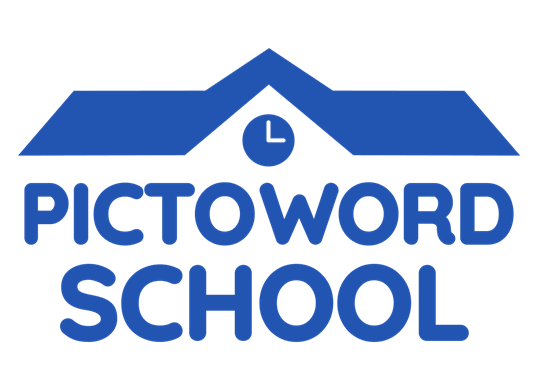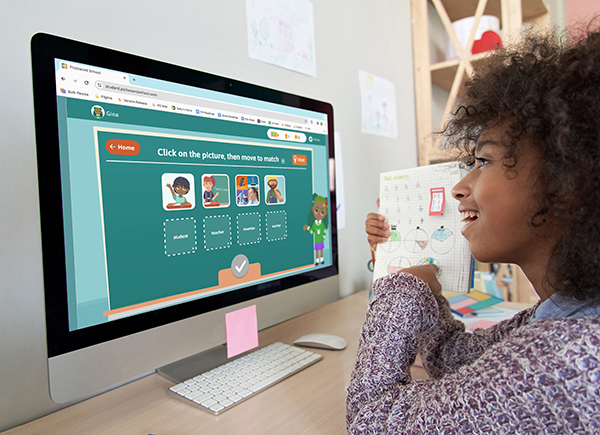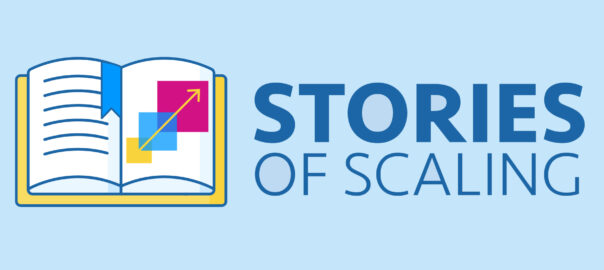Game-Changer: Pictoword School’s Scaling Journey from Playful Pastime to Classroom Tool
By Ela Joshi

What is Pictoword School?
Developed by Kooapps, a mobile gaming studio and publisher, Pictoword School is a K–5 supplemental program that supports students’ vocabulary development, with a specific focus on supporting multilingual learners. The program features engaging word puzzles, game-based learning, student-adaptive personalization, and tailored education content.
Invent: Growing a Popular Vocabulary App into an Adaptive Learning Program

Elli Suzuki is the Director of Education Research & Development at Kooapps.
Pictoword School grew from the demand to make Kooapps’ original mobile app, Pictoword, more targeted for use in schools with multilingual learners. The original Pictoword app, which is still available on Google Play and in the Apple Store, has had more than 40 million total downloads over the last decade. The positive reviews in the Google and Apple app stores had already proven that Pictoword was a hit with teachers, students, and families, who enjoyed using the app with children to build vocabulary and spelling skills.
But in reviewing the user feedback, Kooapps noticed an active group of teachers who were using Pictoword to teach English. This encouraged Kooapps to make a version that was more suitable for teacher and student audiences and more content aligned with the Common Core State Standards (CCSS) and other language-learning standards. Kooapps also wanted to create a browser-based version so that students could access the program on existing school-owned devices, like the Chromebooks often used in schools.
With funding from federal Small Business Innovation Research (SBIR) grants, the Kooapps team developed Pictoword School, playable both on mobile and computer devices. The game includes visual word puzzles that target vocabulary development with differentiation available for students of diverse backgrounds and proficiencies. To determine the skills and content the revised app should focus on, the team began by reviewing the CCSS, Next Generation Science Standards (NGSS), and language-learning standards in states like California and Texas, which have high populations of multilingual learners.
The resulting Pictoword School distinguishes itself from its predecessor, Pictoword, in terms of the format of the games. Core puzzles now focus on spelling, pronunciation, word recognition through visuals, and development of different tiers of vocabulary, from everyday words and general academic words to domain-specific words. While the puzzles of Pictoword School are still primarily picture-based, they are more explicitly focused on making meaning of the words and building students’ English vocabulary. Notably, Pictoword School integrates AI (machine learning) to help it adapt to students’ learning needs. For instance, some puzzles change in response to students’ learning and engagement levels, and vocabulary may be differentiated by students’ skillsets.
Apply: Studying the Feasibility and Impact of a Prototype
Between 2020 and 2023, Kooapps received two SBIR grants to help adapt the original Pictoword app to be more compatible for classrooms. The team used the first grant (2020–2021) to develop a school-based version of Pictoword on mobile to improve the learning experience for multilingual learners and then to conduct a feasibility study. They used the second grant (2021–2023) to develop a browser-based version and conduct an efficacy study.
The feasibility study under the first SBIR grant included 42 multilingual learners across four third-grade teachers’ classrooms. This study demonstrated that the Pictoword School prototype was feasible and provided promise of student growth on a researcher-developed measure of vocabulary and spelling.
The efficacy study under the second SBIR grant further supported the potential of the program to improve students’ vocabulary acquisition. In a randomized sample of 17 third-grade teachers from Title I schools in California and New York and their participating students, including multilingual learners (MLLs) (n = 317, MLLs = 111), the randomized study found significant improvement for students on a researcher-developed measure of vocabulary knowledge, corresponding to an effect size of 0.33 standard deviations. All teachers in the study reported that Pictoword School helped multilingual learners learn new vocabulary, and the vast majority of students who used the program thought it was fun and easy to use.
Apply: Gathering User Feedback to Refine the App
Over the course of these two studies, the Kooapps team and their research partner conducted multiple rounds of user testing with teachers and students. This user feedback, coupled with ongoing input from Kooapps’ Educator Council across two years, led to “radical” changes in Pictoword School’s features.
First, the research partner collected feedback through user testing and teacher focus groups. The partner invited third-grade teachers who had an English Learner credential and whose classrooms had a significant number of multilingual learners to review wireframes and mock-ups and to test early versions of the app.
Then, once the Kooapps team had a minimum viable product, they asked a set of teachers to pilot the app in their classrooms to provide further feedback on the product through individual or focus group interviews.
Each of these user testing rounds, in which teachers used Pictoword School and tried to integrate it into their curriculum, took several weeks. The team also conducted three rounds of student user testing in which they solicited direct feedback from multilingual learners. To recruit students, the research partner asked focus group teachers to share the opportunity with parents of multilingual learners in their classrooms.
The Kooapps team also requested feedback from their Educator Council. In the design process, Kooapps’ research partner strongly recommended creating this Council, a group of 8 to 10 teachers outside of the research studies that meets with Kooapps once a month. To recruit council members, the Kooapps team used word-of-mouth to reach a broad group of teachers and former teachers who worked with multilingual learners. An advisor to Kooapps who supports their commercialization efforts also contacted teachers in their network. This approach helped them recruit a core group of teachers who, according to Elli Suzuki, Kooapps’ Director of Education Research and Development, “enjoyed the community aspect of the Educator Council” and “started inviting more teachers.”
Currently, council members include English as a second language (ESL) teachers, special education teachers, teachers who specialize in implementing response to intervention (RTI), and general education teachers. All teachers on the Council have experience teaching multilingual learners. The team meets with the Council monthly to solicit their feedback on Pictoword School—not only about how the product can be used with multilingual learners, but how it can meet the diverse behavioral and learning needs of students, such as those with dyslexia.
Based on user and Council feedback, the Kooapps team has made a number of refinements to Pictoword School, such as:
- adding native language and auditory support for students
- simplifying pictures and enlarging the text to make the program accessible to students from a range of backgrounds
- adding a feature for teachers to create puzzles with a customized word list
- integrating AI to personalize students’ experiences
- adding a dashboard for teachers to view students’ progress and performance data
Additionally, the Kooapps team fixed translations of words. For example, some teachers shared that the translations in Spanish did not apply to all Spanish-speaking students, given that Spanish spoken in Mexico sometimes differs from Spanish spoken in other countries. Accordingly, the team modified how the app translates different words for students from different language backgrounds.
Transition: Forging a Pathway from Development to Commercialization
As of February 2024, Pictoword School’s browser-based school solution is used by 10 teachers in the United States and their 100 students. Pictoword School’s mobile-based family solution is available to the public and is used by 300 daily active users around the world through organic traffic. One of Kooapps’ goals is district-wide adoption.
— Elli Suzuki, Director of Education Research and Development at Kooapps
To market Pictoword School to end users, the Kooapps team has used cold calling and cold emailing to reach out to teachers, schools, and districts, with specific outreach to coordinators of multilingual learning. The Educator Council has also supported commercialization efforts by posting about Pictoword School on their LinkedIn profiles, sharing it with teachers they know, and generally advocating for the product.
Suzuki notes that it is hard to pinpoint exactly which aspect of Kooapps’ outreach strategy has been most successful. Keeping messaging simple with keywords has helped. In follow-up conversations, the company emphasizes Pictoword School’s impact and evidence base and folds in testimonials from teachers. The Kooapps team is sharing findings from their impact studies with districts as evidence of the product’s success. They are also raising awareness of how the product can be used in small groups in classroom settings.
Nevertheless, Suzuki admits that there are challenges. Cold outreach is a slow process—for every 20 to 30 districts the team calls or emails, they may receive one response. While teachers are interested in the product, it is difficult for them to use it in their classrooms without school or district approval for purchase. However, knowing when to reach out to schools and districts has been the biggest challenge, since school and district websites do not always state when the next budget review cycle is.
In addition to reaching out to school districts, the Kooapps team has started communicating directly with parents, caregivers, and children for use of the product at home. Based on feedback from other entrepreneurs, they understand that both strategies take time.
Key Takeaways
Suzuki shared several lessons learned from their scale-up efforts:
- Deeply understand the problems you are trying to solve. This requires talking to teachers and observing classrooms.
- Balance building an evidence base for your product with improving end-user engagement. While some potential users specifically look for an evidence base, Suzuki noted that teachers may be more interested in how students engage with the product and how well it integrates into their classrooms—something Kooapps is continuing to address based on ongoing user feedback. Currently, the Kooapps team is working to make Pictoword School compatible with other tools and technologies teachers use so that the product integrates seamlessly into teachers’ existing planning and activities. They are also expanding the vocabulary covered and increasing the alignment of Pictoword Schools’ content with school curricula.
- Find a network of potential consumers. Conducting research studies through the SBIR grants helped the Kooapps team create a network of teachers to test the product as well as build a user base. As Suzuki shared:
Having the SBIR really helped create a connection, a network with teachers that we wouldn’t have been able to have on our own. So I think a lot of our current users are coming from the research studies. They’ve tried it out. They liked it. They wanted to keep using it again. And so I think that partnership was really helpful to get Pictoword School in the hands of actual users, and they are continuously using Pictoword School to this day. - Talk to others in the field, even if they’re outside your content area. For Kooapps, talking to other founders, entrepreneurs, and sales executives to learn about their products’ commercialization journeys has been an important time investment.
Next Steps
In the future, Kooapps is looking to sell Pictoword School to a district to pilot and provide testimonials that the team can use in marketing. They hope that a district sale will have a positive ripple effect for future sales. Specifically, the team anticipates working with a district that will help them develop their process for piloting the product across a district.
They also hope that district-wide adoption will provide them with additional feedback and testimonials from educators to further improve and showcase the product. In their outreach, the Kooapps team is targeting districts with high populations of multilingual learners and where there are gaps in achievement between multilingual learners and non-multilingual students.

Published March 2024.

